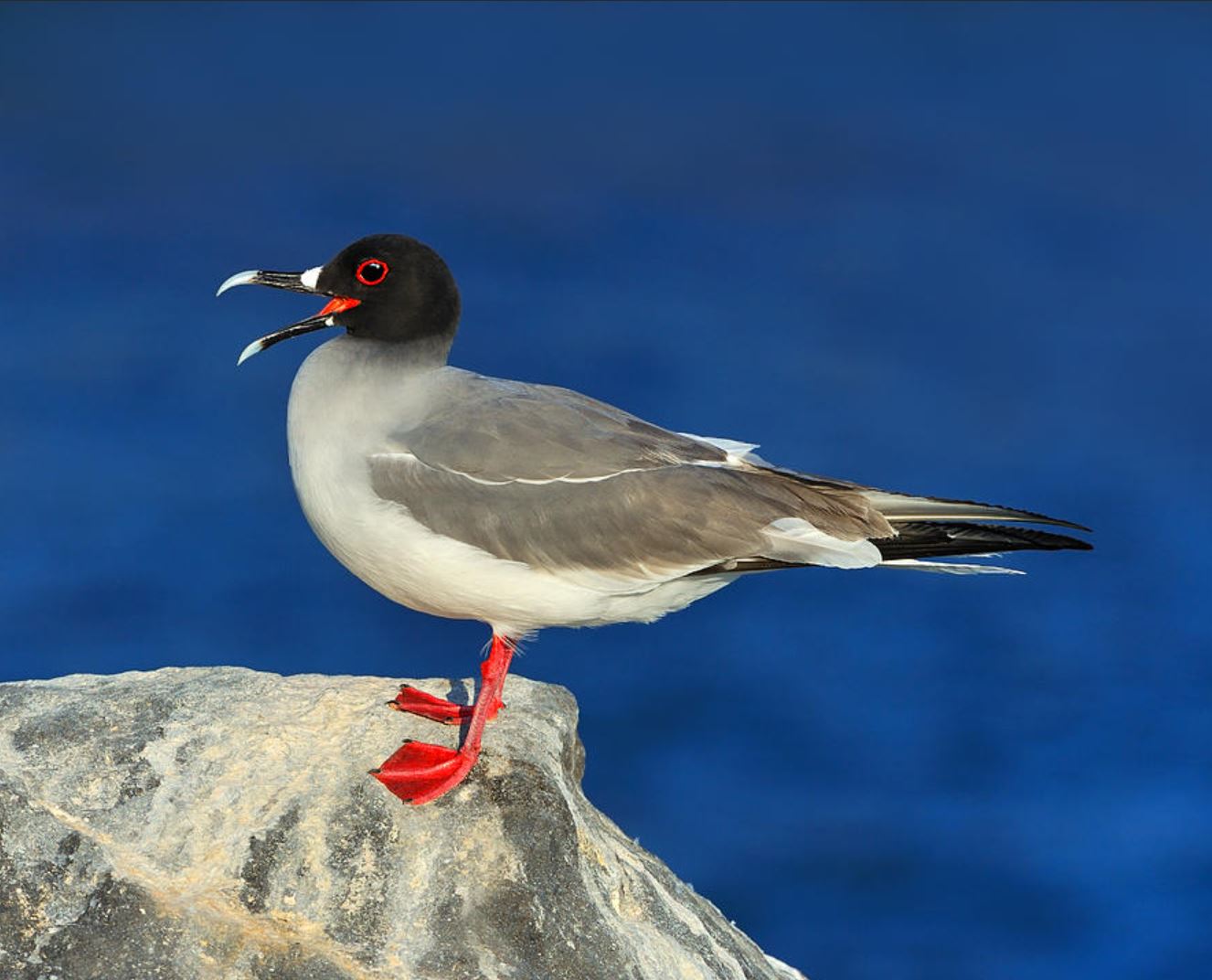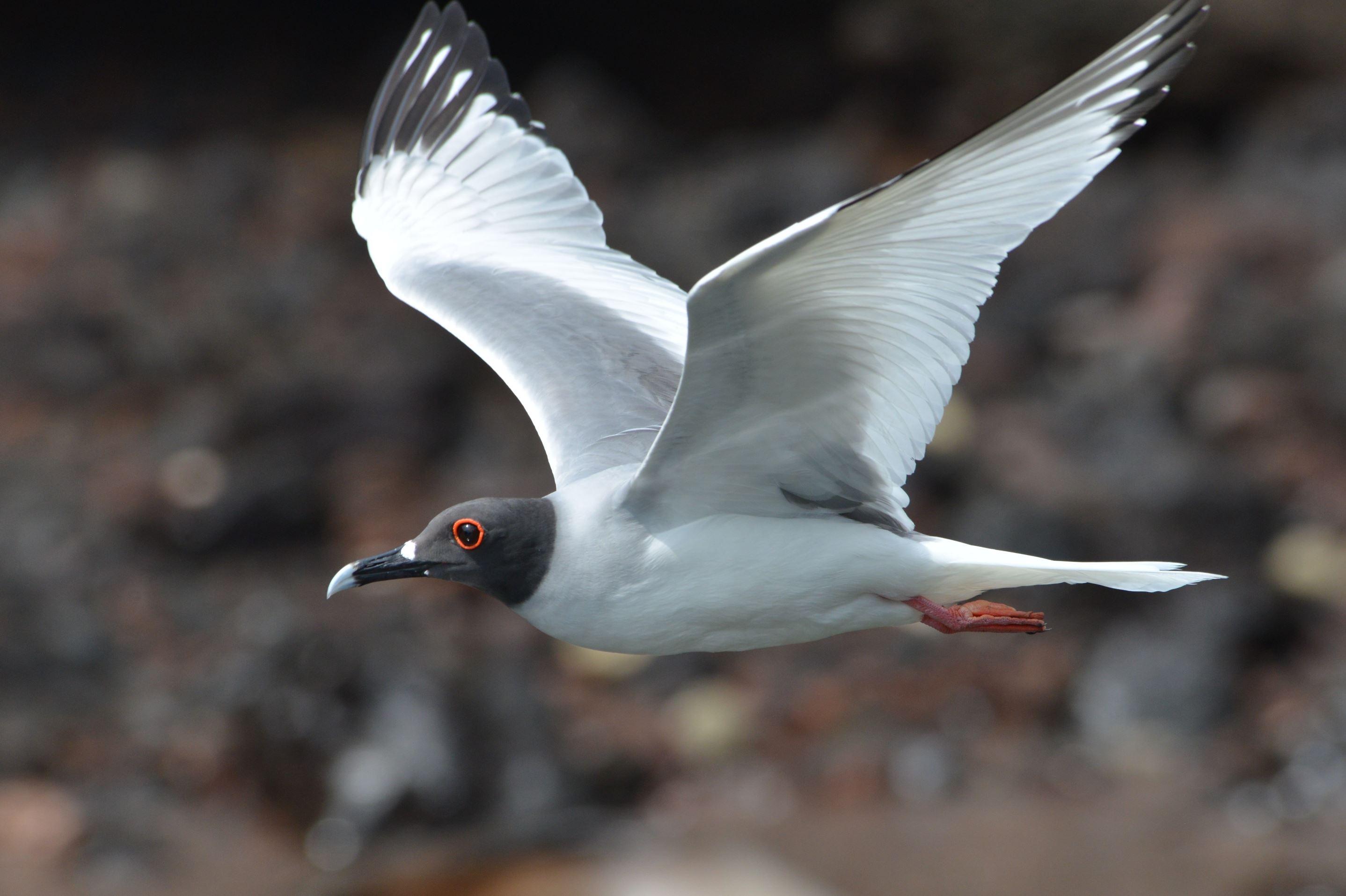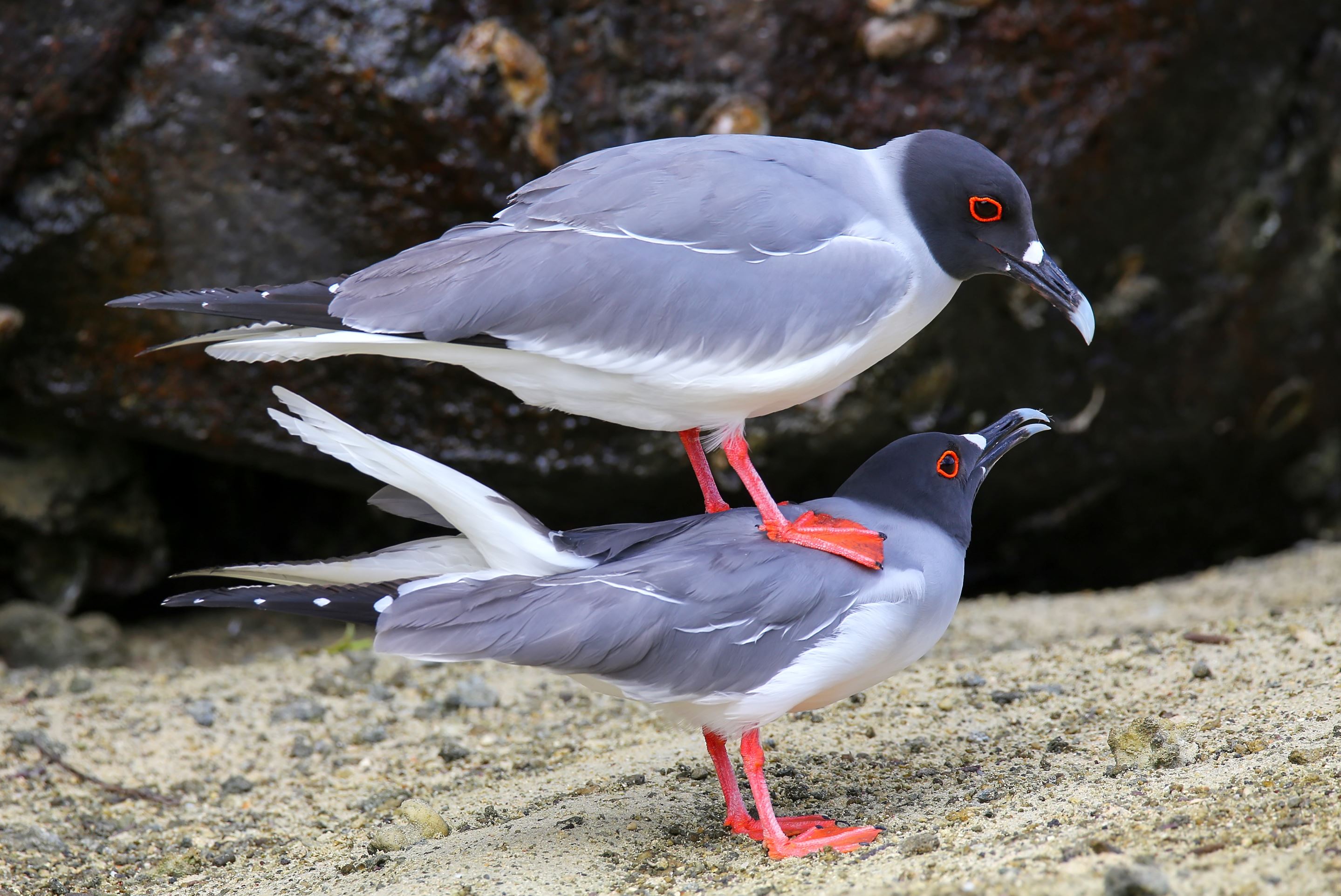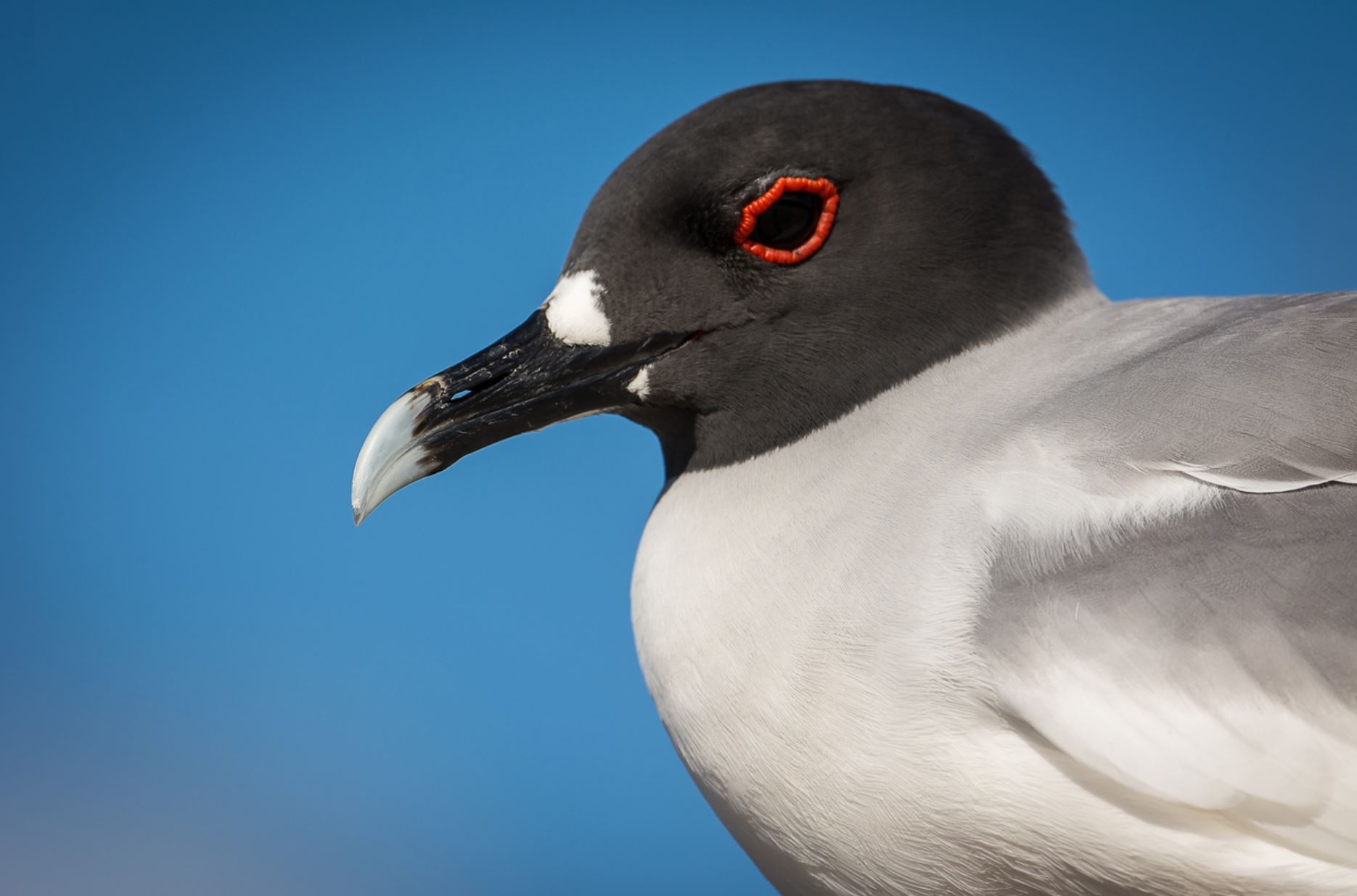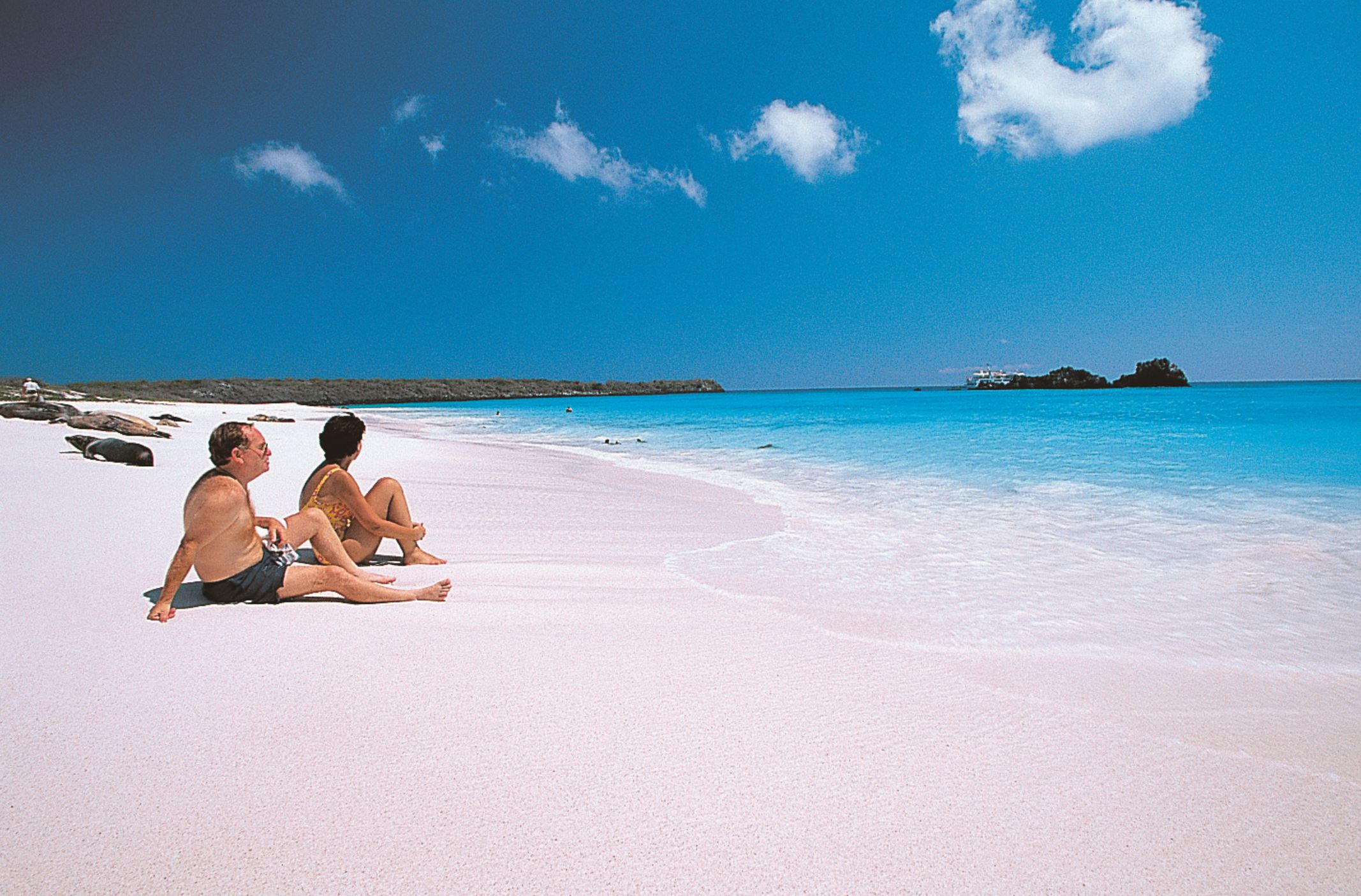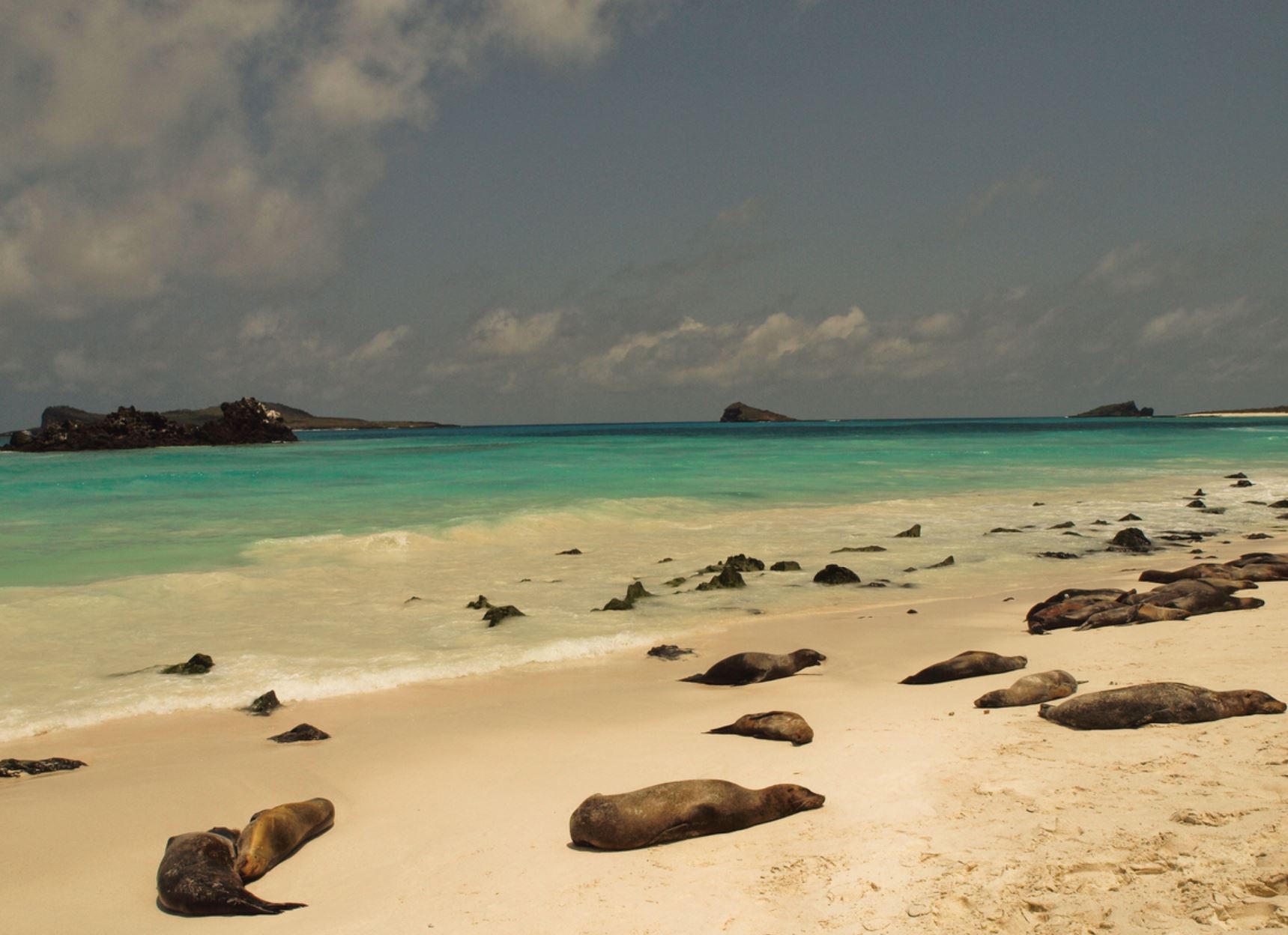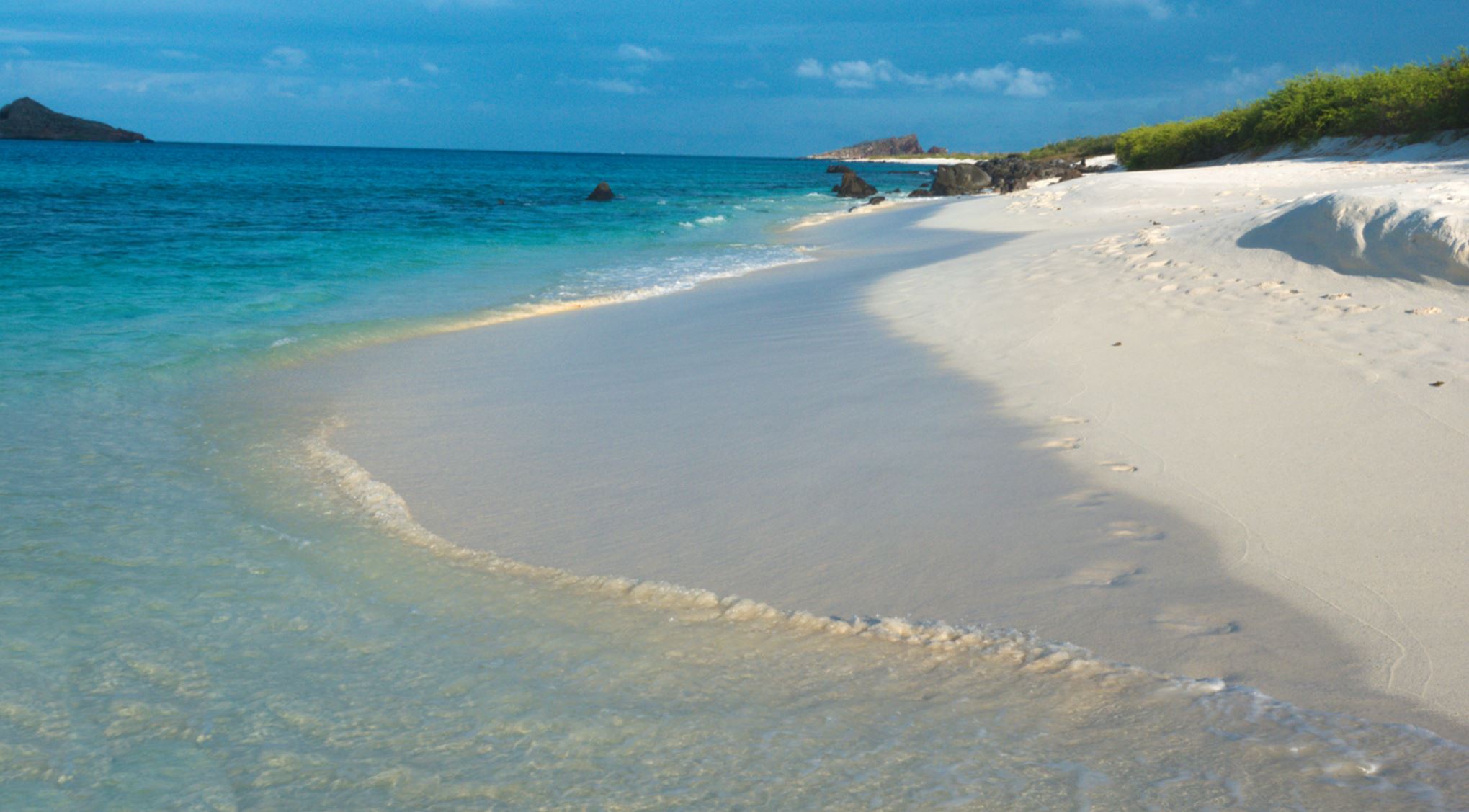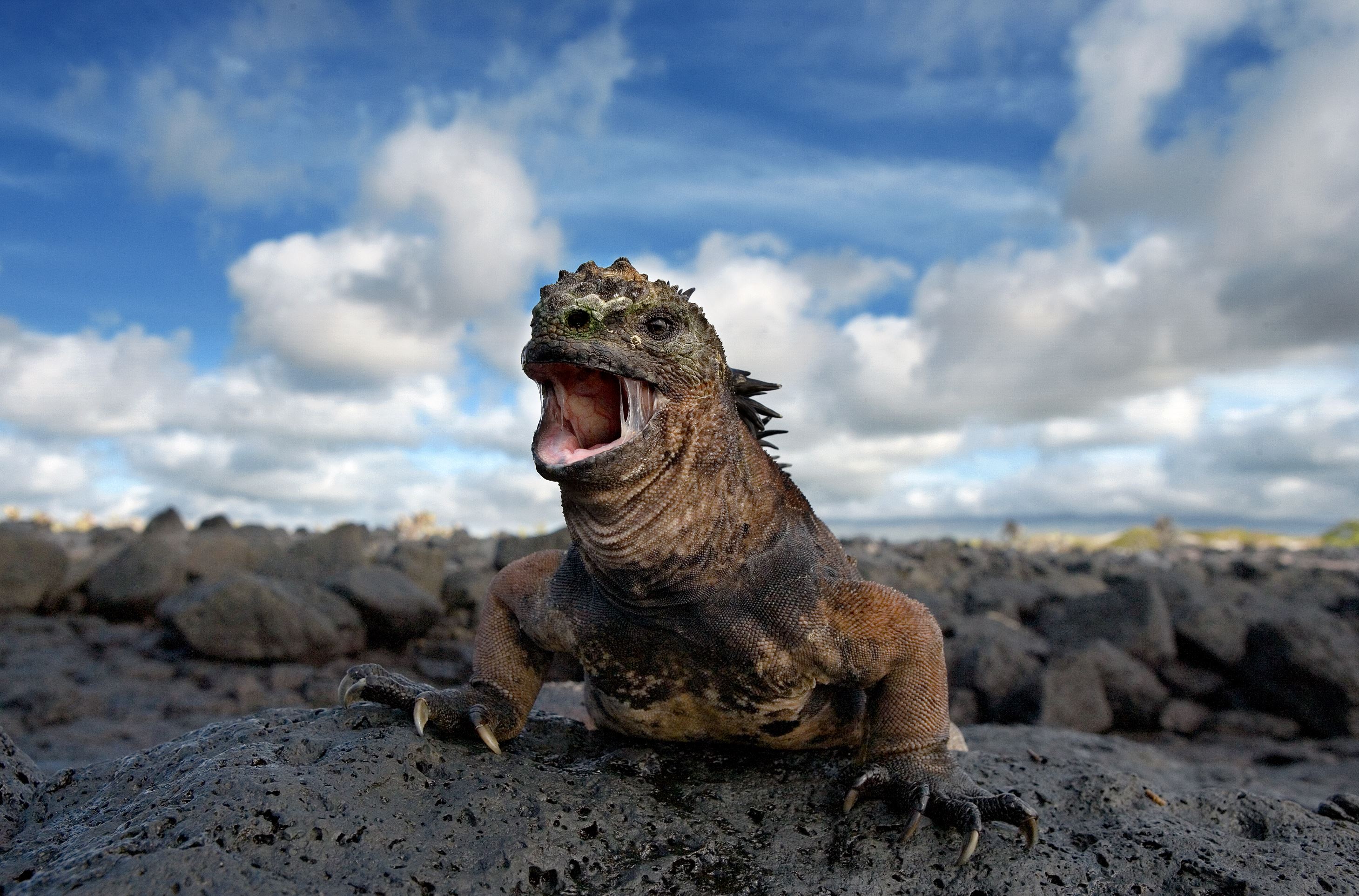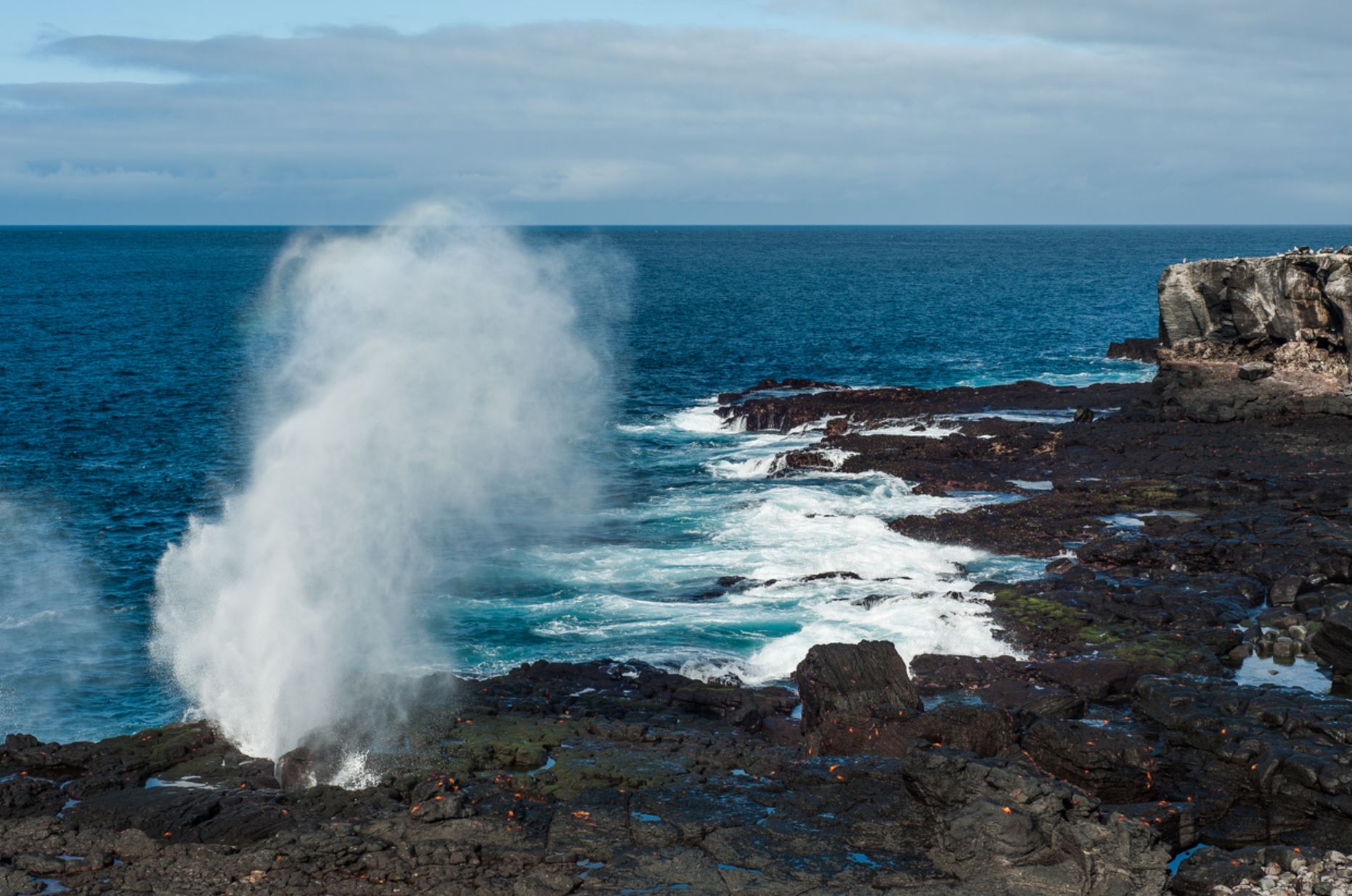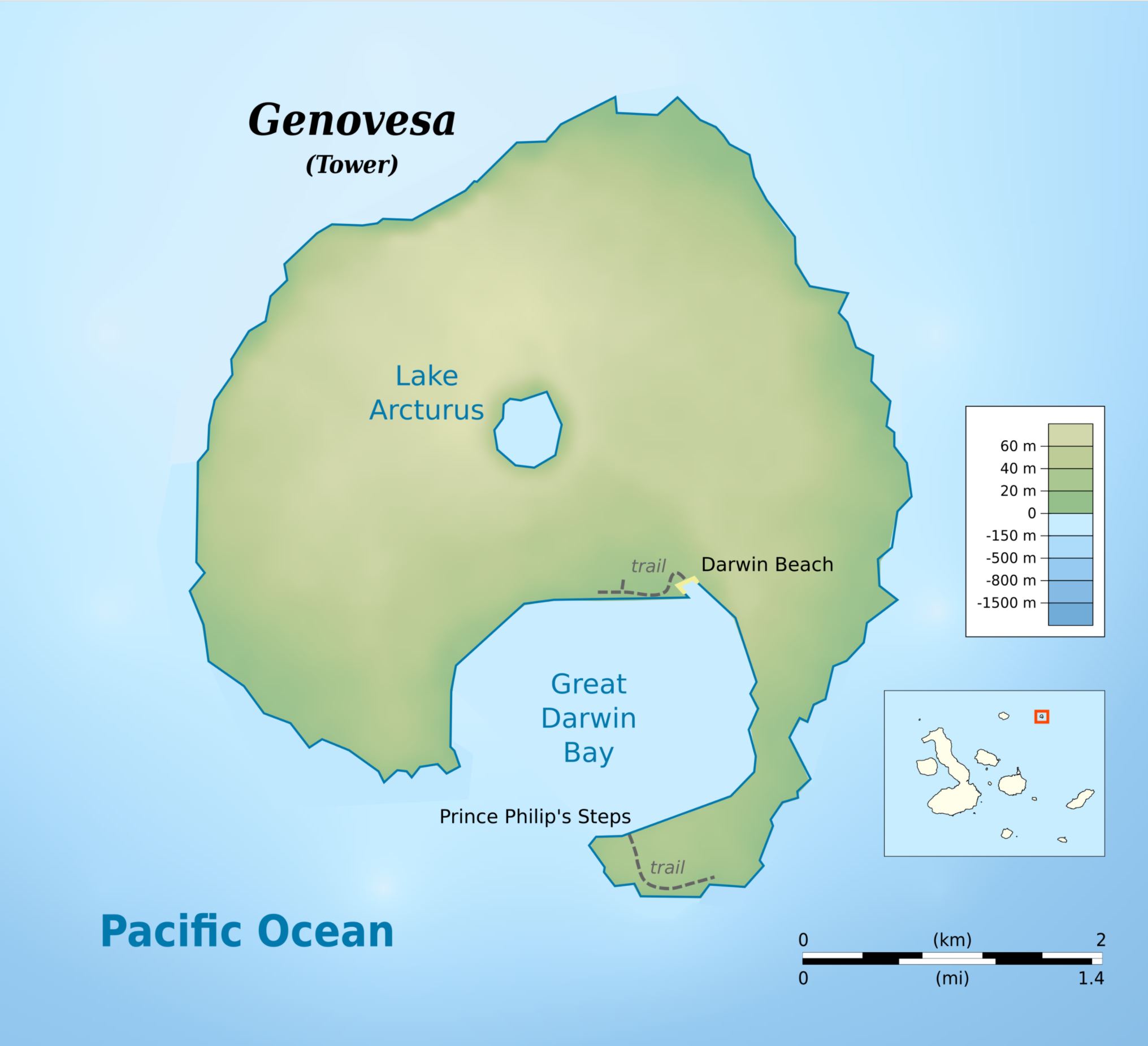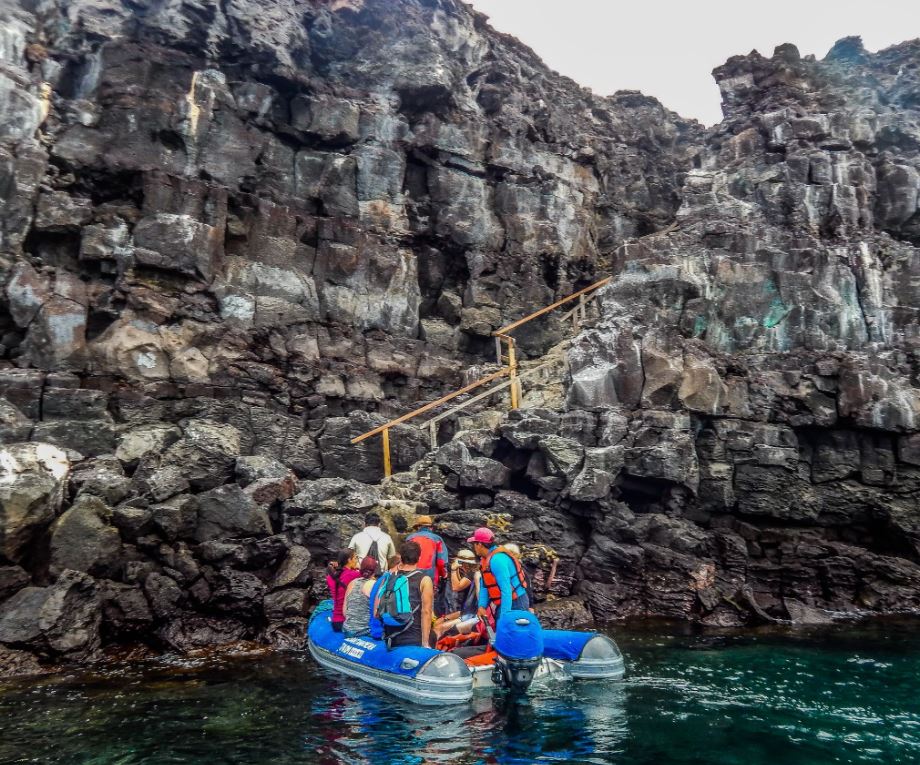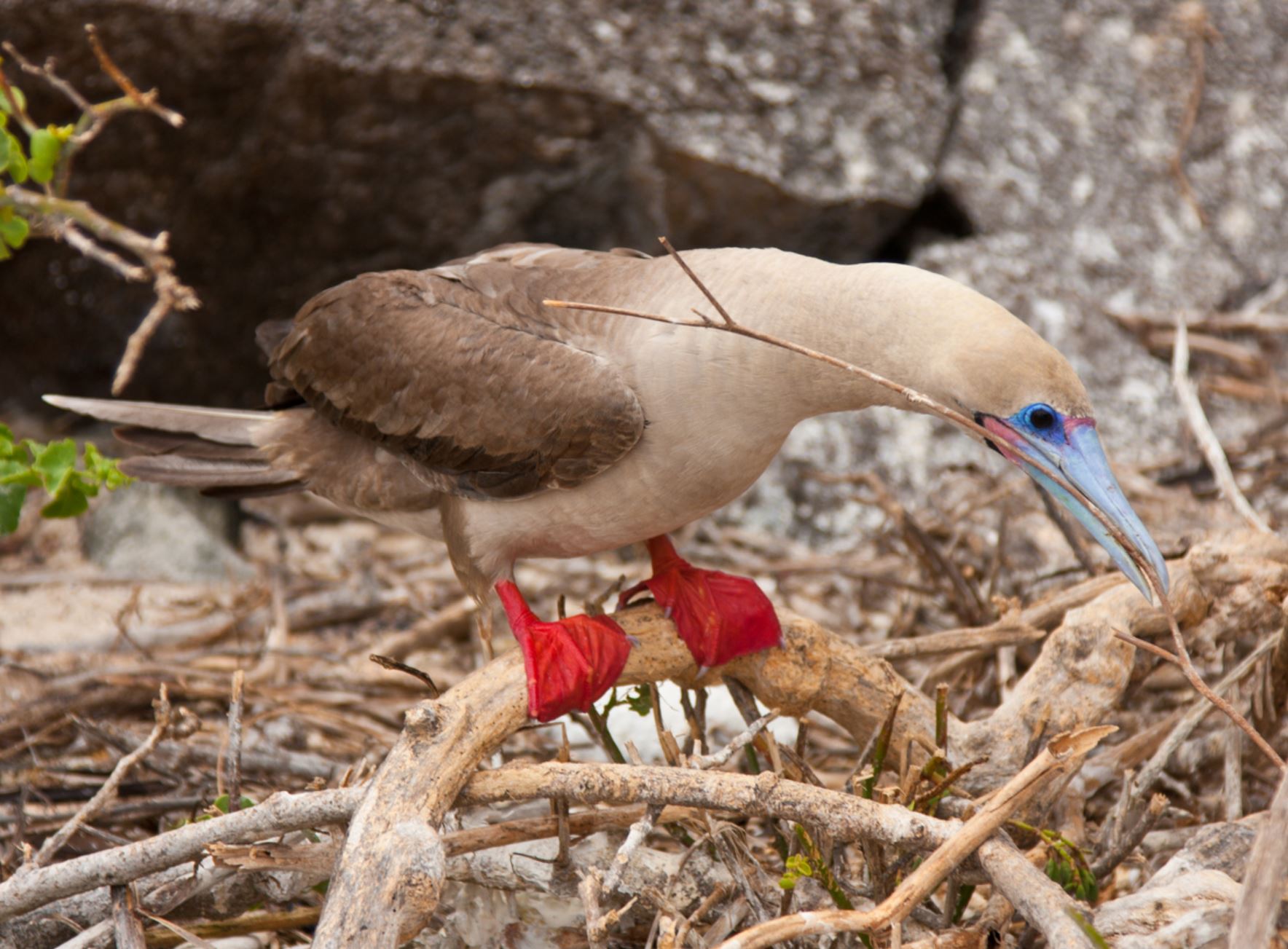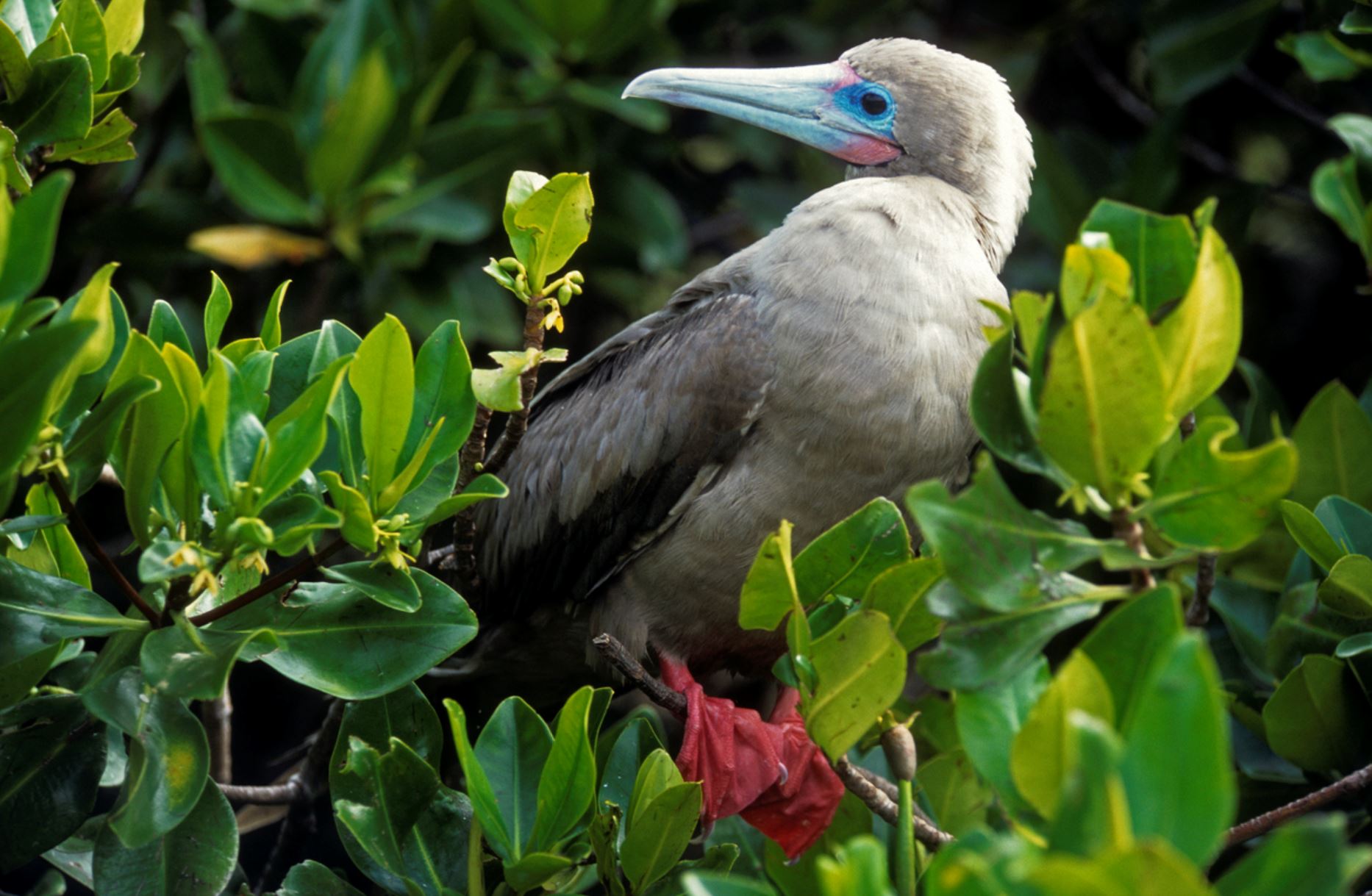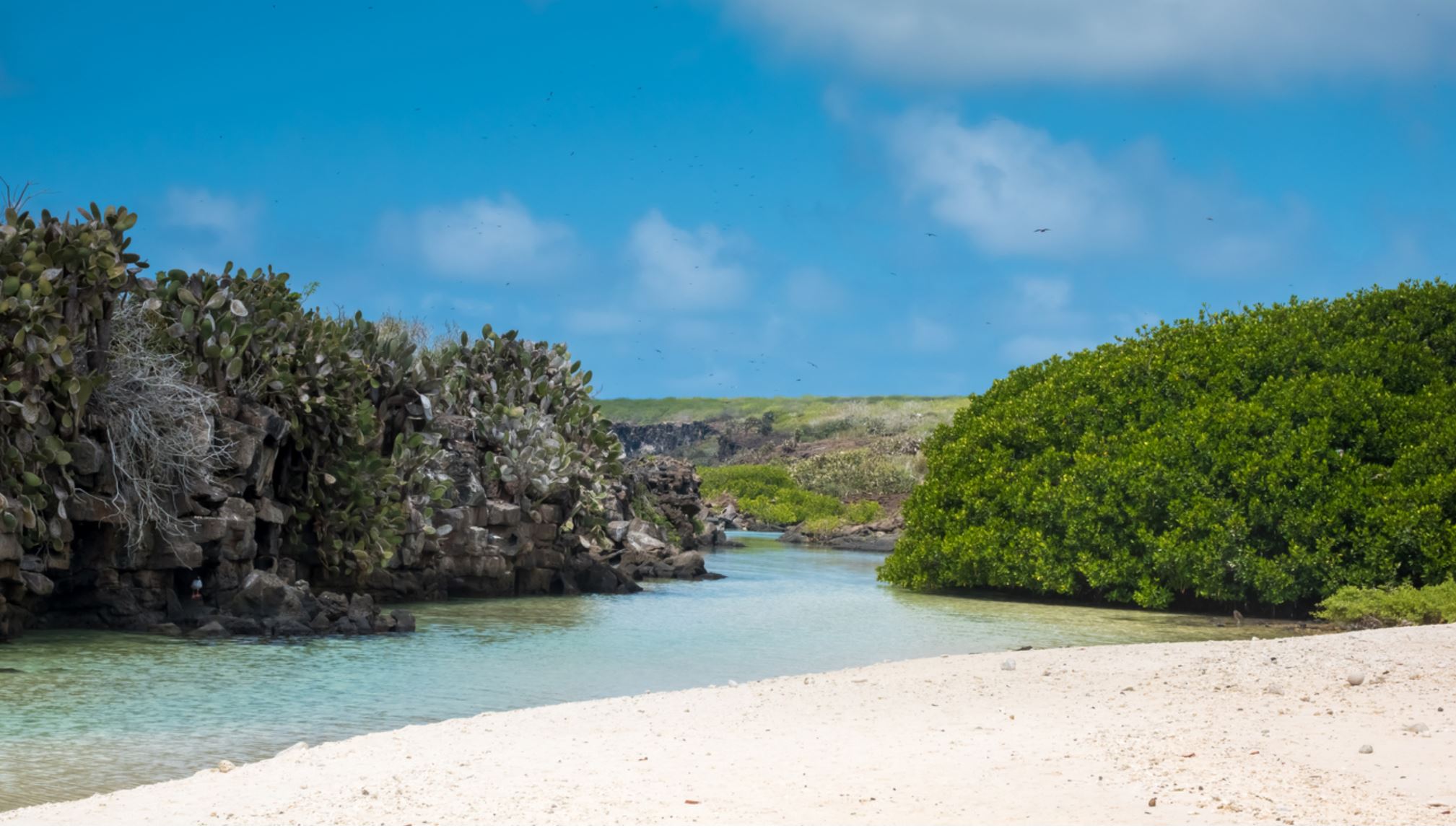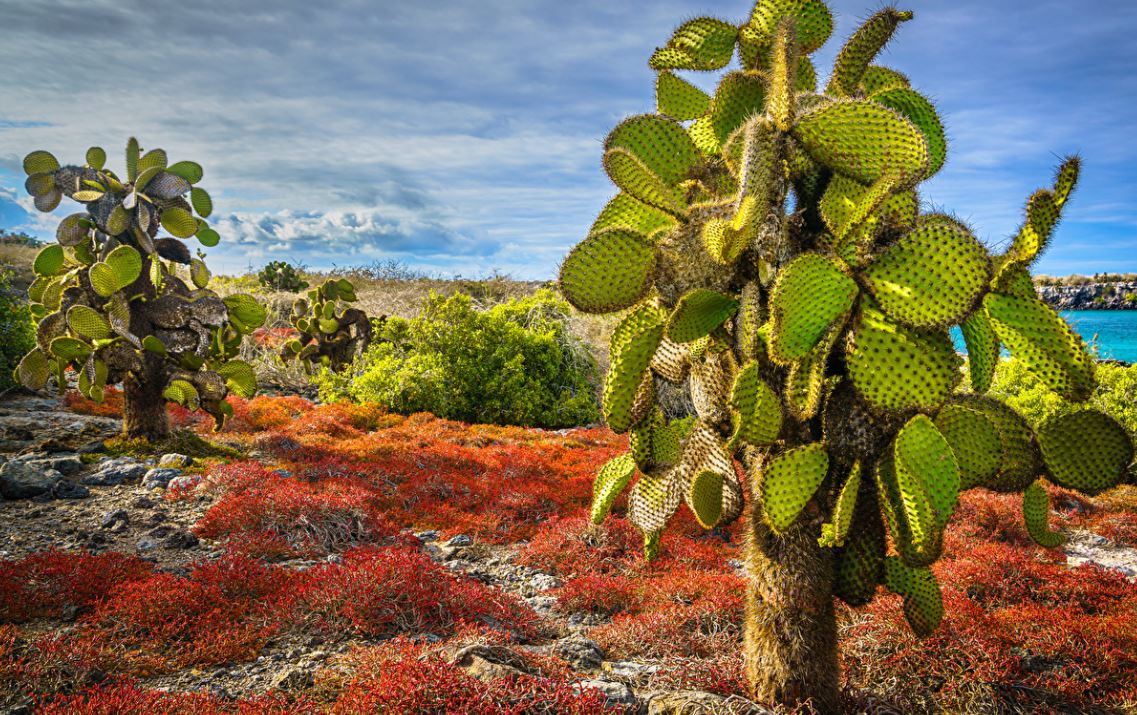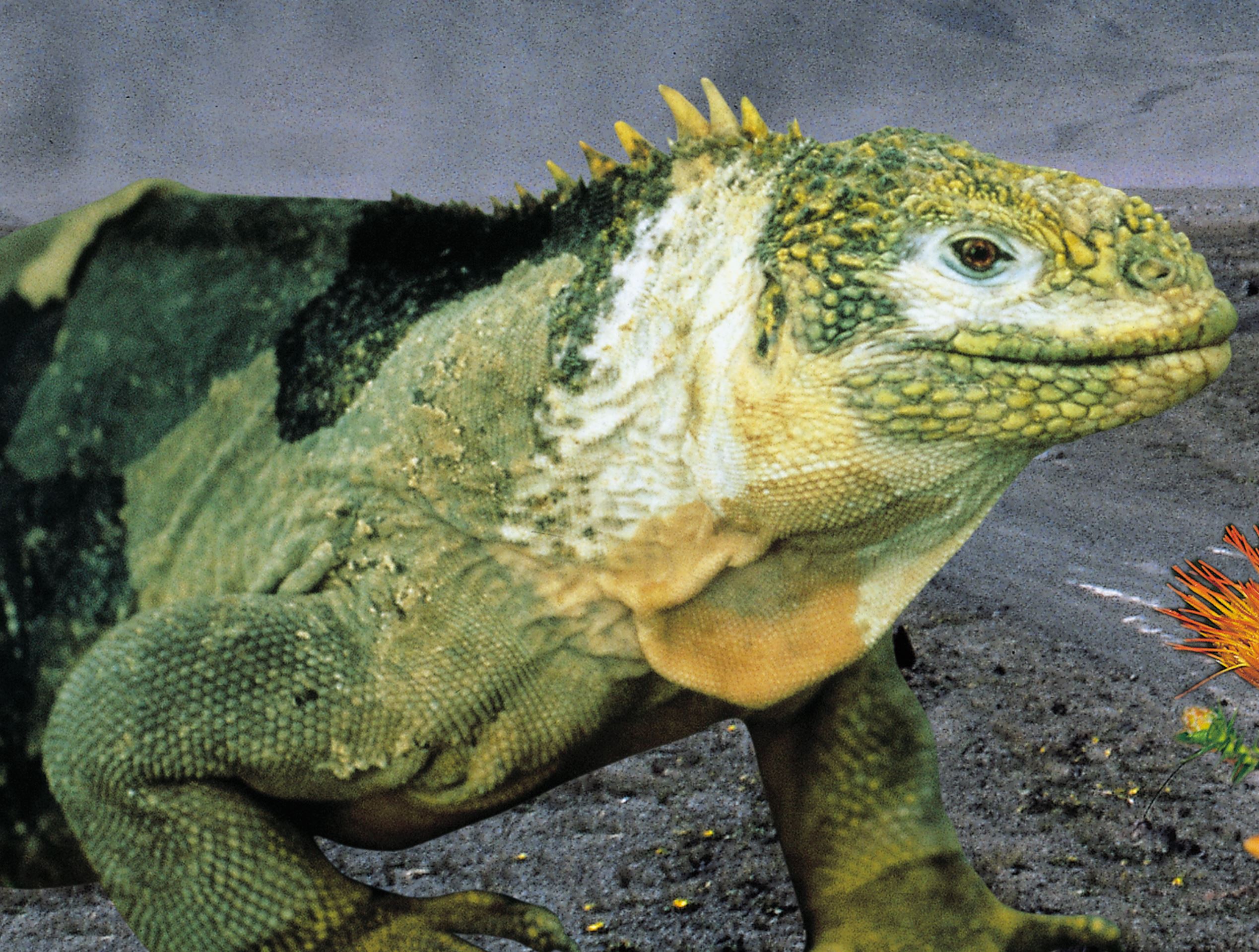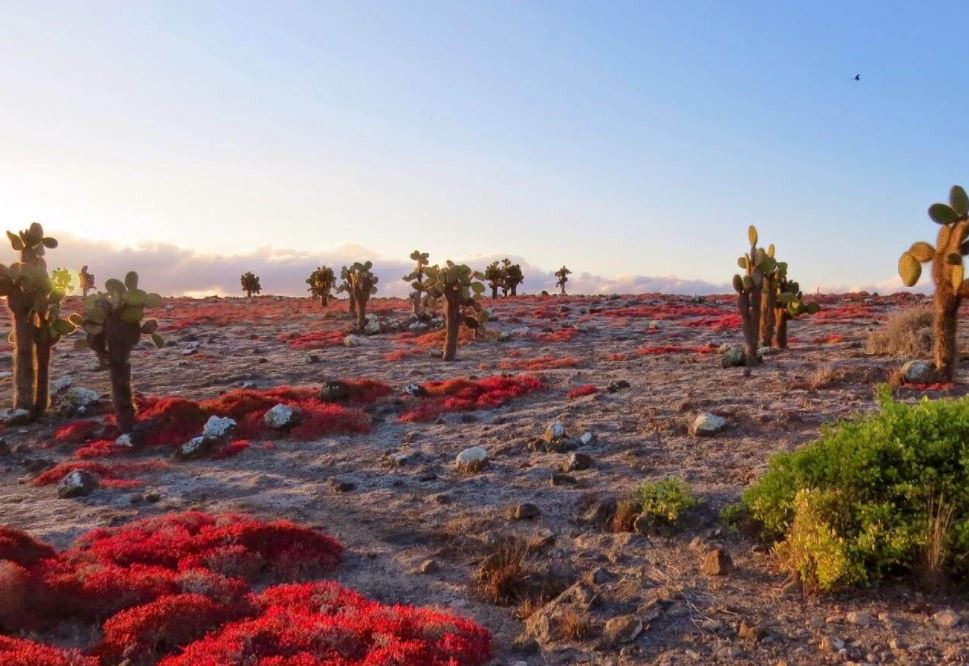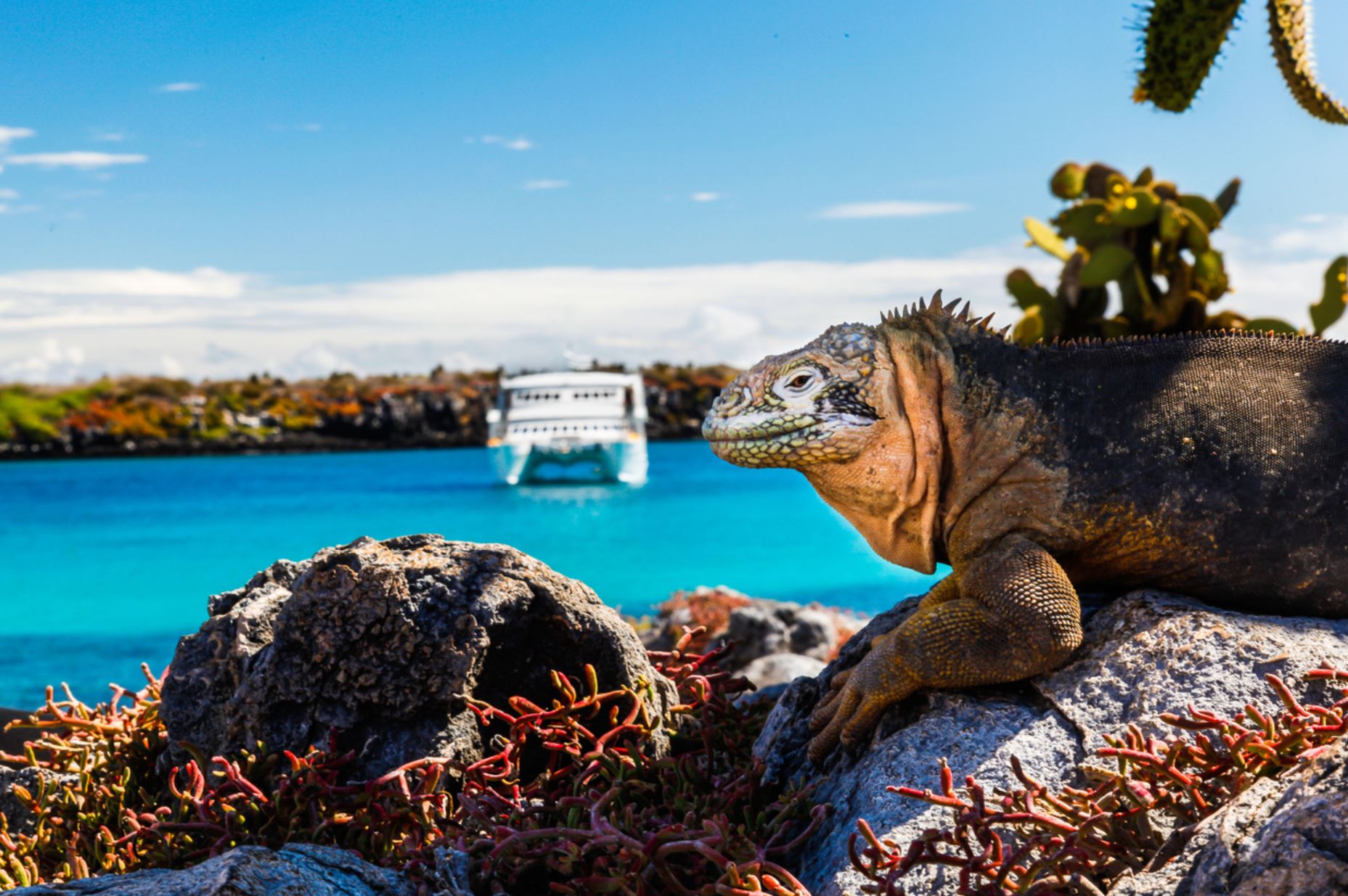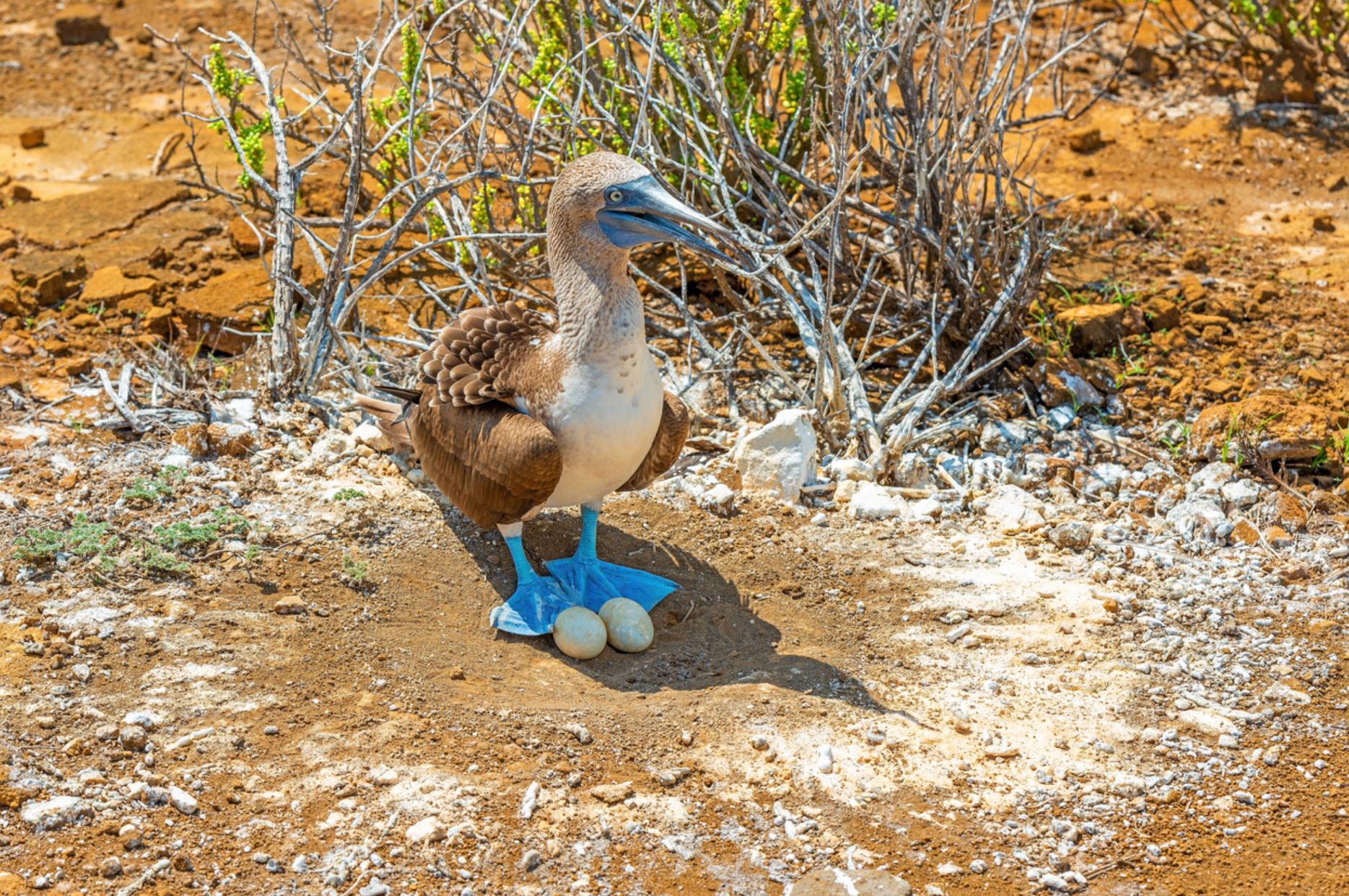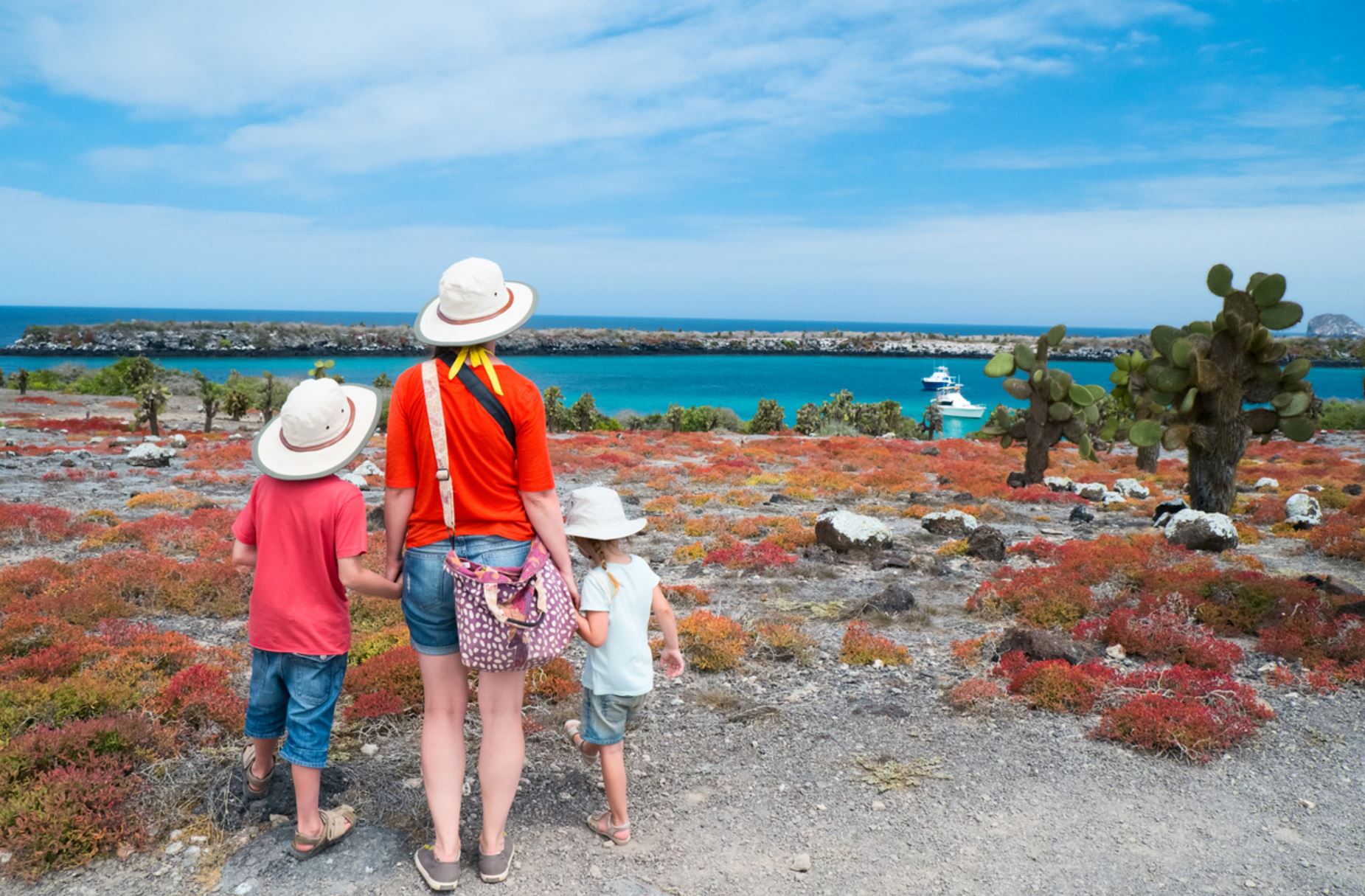Swallow-Tailed Gull
The swallow-tailed gull is endemic to Galapagos. They prefer areas with warmer water in the eastern islands. When they are not breeding, they travel long distances and feed out of the sea as far as south Peru and Chile.
They feed mainly on squid and fish found in the surface on nocturnal shifts. Nocturnal fishing is unusual among gulls.
Their nests are located on the rocks, bare lava and cliff areas in the shoreline of most islands. Females lay 1 egg that hatches 35 days later. Chicks spend about 3 months with their parents before they are independent.
They make several vocalizations, most of which are to communicate with others in the colony. They can warn others individuals when intruders are near the nesting sites and by several aggressive postures towards intruders.
Animal Group: Seabirds
Scientific Name: Creagrus furcatus
Animal Average Size: 51 - 57 cm
Animal Average Weight: 0.61 - 0.78 kg
Places where you may see Sunfishes in Galapagos: Genovesa, South Plaza, Española
Pictures
Islands where you can see the animal with a little luck:
Española
English named for the Española Island it Hood Island after Viscount Samuel Hood. It is located in the extreme southeast of the archipelago and is considered, along with Santa Fé, one of the oldest Galapagos islands, at approximately four million years. A popular tourist stop, Isla Española is the most southerly island in the Galápagos Archipelago. The climate is very dry, like most of the Archipelago. But due to the flatness of the island, it is the driest of these islands, with only a few inches of rain per year. It is about a 10- to 12-hour trip by boat from Isla Santa Cruz.
Tourists come to see the waved albatrosses (from March to January, almost the entire world population breeds on the island) and the mating dances of blue-footed boobies. Two spots are especially popular with visitors: Bahía Gardner, which has a lovely beach; and Punta Suárez, of interest because of its varied bird-life. This island has its own species of animals, such as the Hood mockingbird, which has a longer and more curved beak than the one on the central islands; the Española lava lizard and the marine iguana of the subspecies venustissimus, which has red markings on its back. There are also swallow-tailed gulls, Galapagos hawks and other birds. The island has been recognised as an Important Bird Area (IBA) by BirdLife International.
While Española Island is one of the oldest of the Galápagos Islands, this island is dying, slowly becoming a rocky, barren land with little or no vegetation. But this does give large bays, with sand and soft shingle which attracts a healthy number of Galapagos sea lions. In January 2020, it was widely reported that a male Galapagos tortoise named Diego fathered and resurrected the island tortoise population, saving the diminishing species from near extinction.
Visitor sites:
Gardner Bay, Suarez Point, Osborn islet
Genovesa
Genovesa Island (Spanish: Isla Genovesa), named after the Italian city of Genoa, in honor of Christopher Columbus, (referred to in English as Tower Island) is a shield volcano in the Galapagos Islands in the eastern Pacific Ocean. The island occupies about 14 square kilometres (5 sq mi), and its maximum elevation is 64 m (210 ft). The horse-shoe shaped island has a volcanic caldera whose wall has collapsed, forming the Great Darwin Bay, surrounded by cliffs. Lake Arcturus, filled with salt water, lies in the centre, and sediment within this crater lake is less than 6,000 years old. Although no historical eruptions are known from Genovesa, there are very young lava flows on the flanks of the volcano. Genovesa is one of the most precious islands to visit in a Galapagos cruise! Genovesa is also known as the “Bird Island“, and it most certainly lives up to certain standard in a spectacular way. Passenger will have the opportunity to enjoy the most representative birds of Galapagos as: Puffball–chicks, white both yellow–crowned and lava herons, Red footed boobies contrasting with the Nazca booby and also the Sawllow–tailed gulls, the only nocturnal gulls in the world that will be nesting at the cliff’s edge.
Visitors sites: Darwin Bay, Prince Philp´s Steps
South Plaza
One of the smallest and, depending on the season, most colorful islands. Find sea lion colonies, land and hybrid iguanas and countless birds soaring by the cliffs. It is an unpopulated island.
These islands are interesting formations without a volcano resulting from an uplifting from underwater. Conformed by two islands, one flat and the other inclined, they create very special ecosystem dynamics. North Plaza is visited only with scientific and conservation purposes.
The biggest Land Iguana population that can be visited. There is a big ecosystem formed of Cactus Opuntia that holds a population of Land Iguanas, the smallest ones of the archipelago. The trip around South Plaza place allows the visitor see the whole population and to notice how this animals survived in this and other similar environments when they arrived and established. Rarely a hybrid of Marine and Land Iguana can be found on the trails
The walk begins with an impressive cactus forest surrounded by sea lions, land and marine iguanas; as we reach its highest point 82 ft (25 m) be on the lookout for tropicbirds, Nazca and blue -footed bobbies and swallow-tailed gulls.
In South Plaza there is a large colony of the smaller sized land iguanas. The population is approximately 300 individuals. They feed on all kinds of vegetation, but during the dry season, they survive on the fruits and flowers of Opuntia cacti. Due to their proximity with marine iguanas, this is the only place on Earth where we will find the Galapagos hybrid iguana.
Activities: 2-hour 15 min hike
Highlights: Red island due to its vegetation made up of sesuvium, a largest colony of sea lions, the unique landscape of a cactus forest, hybrid iguanas, Nazca, blue-footed boobies, swallow-tailed gulls and red- billed tropicbirds.
Visitor sites:
Walking about this very interesting island
Mr. Frobeen can give you precise information about the ships.
Mr. Frobeen will be happy to advise you by phone at +49 (0)7633 9399360 or via email info@frobeen.de
If you want to book, what are the payment methods?
The reservation is gratis as an option.
If you want to make an fixed booking, there is to pay a deposit of 20%.
The remaining payment is due 4 weeks before departure. In individual cases, such as diving cruises, other rules apply. Information on request.
- Your payments are insured against bankruptcy!

